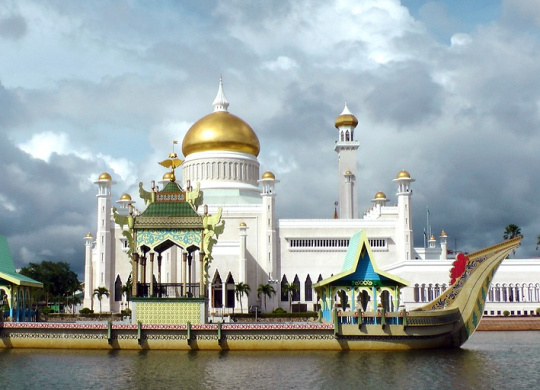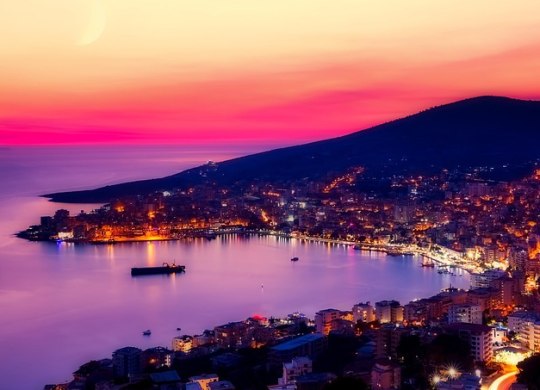How to move for permanent residence in Micronesia and what documents are needed for this

Whether you're a diving fanatic or a nature lover, you'll love Micronesia with its white sandy beaches and authentic, well-preserved culture. You can discover this tropical country in the middle of the Pacific Ocean because of the different peoples living on the islands and their traditions, which are manifested in numerous ceremonies and daily activities: funerals, dances, boat building, making shell jewelry, songs, basket weaving, and sculptures.
On the Chuuk Islands, diving is in focus: there is rich marine life, barracudas, stingrays, and Japanese World War II shipwrecks and submarines.
In addition to diving, Kosrae and the surrounding small islands offer numerous hikes, mountain biking, and even canoeing to explore the mangrove forest.
In Pohnpei state, where the capital Palikir is located, you can discover Nan Madol Island, a group of man-made islets with a megalithic city that stands like a fortress and is unparalleled. The island is also home to more than 750 plant species (250 of them endemic) and extraordinary fauna, lizards, deer, wild pigs, and many others. Its highest point is 884 meters.
Finally, Yap still preserves centuries-old traditions such as traditional dances and stone money (discs from 30 cm to 3.5 m in diameter!), which are still in use, although not official. You can also snorkel with manta rays, play with dolphins or take an old-fashioned pirogue ride.
Micronesia Migration in Practice
No Schengen (visa), is required for stays of less than 3 months: a passport valid for 6 months after your return date is sufficient.
To get to Micronesia, you are sure to make a stopover in Asia, then via Guam, which serves all the islands in the region by plane.
Cabs and boats are used to travel between the islands. There is a bus service on Yapa, and you can also rent a car.
There are no particular health risks, but as always, up-to-date universal vaccinations are recommended.
Safety is also not an issue but beware of currents, which can be dangerous in some parts of the coast.
Legalization is a required formality that ensures the accuracy and authenticity of such documents for various organizations in Micronesia, such as a company, schools, or authorities. A request for legalization may involve the creation of a subsidiary, the registration of a trademark, the enrollment in a university, the celebration of a marriage, the expatriation, or the exportation of goods to Micronesia.
In short, Micronesia requires that documents submitted to it be legalized. Legalization of a document in Micronesia comes down to certifying the seal with which the document is sealed, the quality of the signer, and the authenticity of the signature affixed.
Steps for document legalization for Micronesia
Depending on the type of document for your formalities in Micronesia, the legalization procedure will involve the following steps of attestation:
First step: Chamber of Commerce and Industry (CCI) of your office or notary or ministry.
Second step: Ministry of Foreign Affairs (MAE).
Step 3: Micronesian Consulate.
Micronesian Visa Card: Legalization of Documents
Micronesia needs to provide full assurance of the authenticity of all documents submitted. Therefore, a foreign document cannot be authenticated in France by French authorities, for example. In addition, the Ministry of Foreign Affairs of your country will only legalize documents in the national language or if they are written in French and English or in French and Spanish on the same page. If the documents to be legalized are written in a foreign language, a French translation must be attached, even in the case of Spanish and English.
For authentication, the documents submitted must be originals or, in the case of copies, they must be certified as corresponding to the originals. Only a competent authority can assess the conformity of the document. The only cases in which the document must be original are criminal records and civil status documents.
Commercial documents must be legalized in Micronesia, for example:
- Certificate of Transport;
- Certificate of origin;
- Bill of lading;
- Certificate of origin;
- Tender;
- Certificate of non-radioactivity
- Sanitary Certificate;
- Halal Certificate
- Packing List;
- Invoice(s).
Also, legal documents such as:
- Civil status documents related to death, marriage, birth;
- Certificates of citizenship
- Private documents such as contracts, invoices, housing certificates, powers of attorney, letters of recommendation, and IOUs.
- Court documents;
- Notarial deeds;
- Diplomas.
- Court judgments and criminal records;
- Business related documents;
- Free sale certificate;
- Export certificate;
- Sales authorization;
- Certificate of Good Manufacturing Practices;
- Brand Certificate;
- Certificate of exclusivity;
- Administrative documents such as balance sheets, diplomas, articles of association,
- Distribution Letter,
- Letter of Authorization, etc.
Entry formalities and useful information about Micronesia
1. Best season: January to March.
2. Flight time from Europe: no direct flight; 19-20 hours with at least one connection, via Honolulu, Seoul, Hong Kong, and possibly Tokyo, or Taipei.
3. Time difference with Paris: +8 or 9 hours in summer; +9 or 10 hours in winter.
4. Citizens of member states of the European Union can stay in the Federated States of Micronesia for up to 30 days without a visa or entry permit.
A passport valid for at least 120 days after the date of entry and a return or direct ticket are required. You may need to prove that you have sufficient funds to travel to Micronesia.
Please note that you must go through customs control upon arrival in each of the 4 Federated States.
You can enter the Federated States of Micronesia islands via Hawaii (Honolulu) or Guam, both U.S. territories. Therefore, you will need to comply with U.S. authorities and obtain an ESTA (Electronic Travel Authorization System) prior to departure. The ESTA costs $14 and is valid for 2 years.
Travel to the Federated States of Micronesia (670 islands, the main ones being Pohnpei, Kosrae, Yap and Chuuk) is relatively hassle-free if you understand that the islands are very undeveloped and that the traveler will have rather limited comfort.
30,000 tourists a year visit Micronesia, mostly Americans, Japanese, Chinese and Filipinos. The most visited island is Yap, followed by Chuuk.
There are no direct local air links between the four main islands. If you want to get from one island to another, you have to transit through Guam (or Honolulu). However, the flight from Guam to Pohnpei alternates with a stop in Chuuk or Kosrae, where passengers can disembark or land. If you want to go to Yap, your only option is to return to Guam and then fly to Yap.
The administrative division of the islands and the fact that much of the land is privately owned means that a visitor will sometimes have to seek the consent of the local "chief" and/or landowner(s) (which must be crossed to reach a particular attraction) and pay a fee (up to $6 per person) as a "toll".
Recommended articles
7 min
Residence permit
3 min
Residence permit
How to get a residence permit in Greece: types of permits and registration procedure
Greece is a European country that attracts expats from different parts of the world. For long-term residence here, a foreigner must have a residence permit. Find out what types of residence permits are available in Greece and what is the procedure for obtaining them
31 paź. 2024
More details5 min
Residence permit
2 min
Residence permit
Albania is becoming an increasingly attractive destination for expats and remote workers due to its accessibility and favorable living and working conditions. Find out how to get a residence permit in Albania and what types of permits are available for expatriates, entrepreneurs and students in 2025, as well as the document requirements and application process
28 kwi. 2025
More detailsAll materials and articles are owned by VisitWorld.Today and are protected by international intellectual property regulations. When using materials, approval from VisitWorld.Today is required.